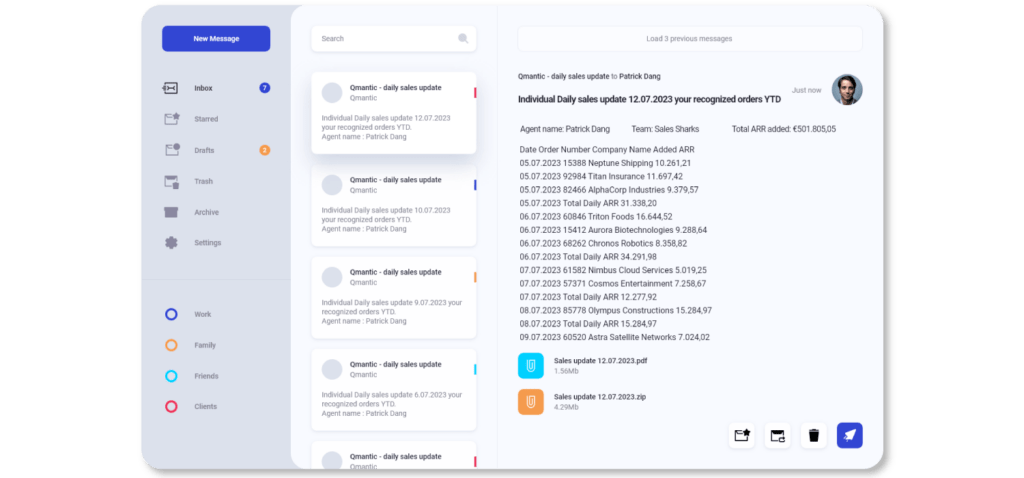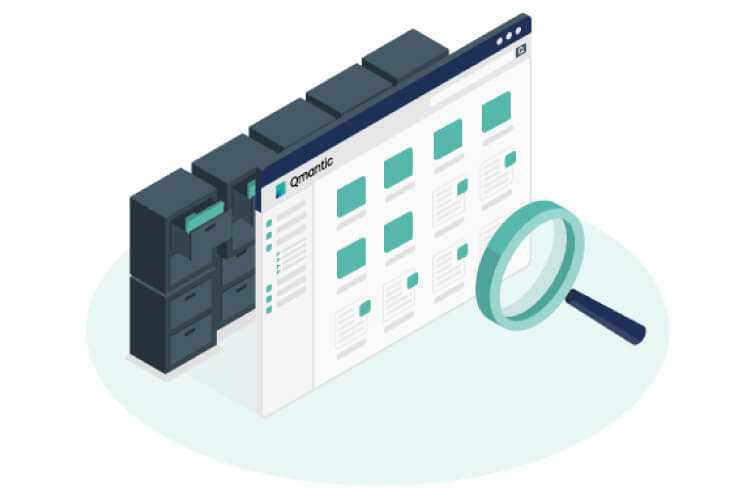In today’s competitive business landscape, companies strive to achieve revenue growth and maximize their potential. One of the most crucial departments responsible for driving this growth is the sales department. Additionally, the performance of the sales department directly impacts a company’s revenue, making it vital to motivate sales agents effectively. To attract and retain top sales talent, companies must create a comprehensive sales compensation strategy that aligns with their business goals. In this article, we will explore why designing a robust SaaS sales compensation plan is crucial and discuss key considerations and best practices to help you create an effective strategy.

What Is a Good Sales Compensation Plan?
Sales compensation plans play a crucial role in motivating and incentivizing sales teams to achieve their targets and drive business growth. A well-designed sales compensation plan can not only attract and retain top talent but also align the efforts of the sales team with the overall goals of the organization. In this article, we will explore the key elements of a good sales compensation plan and how it can contribute to the success of your sales team.
Pros
- Provides clarity and transparency to sales reps, increasing motivation and productivity.
- Aligns sales efforts with business objectives, driving revenue growth.
- Helps attract and retain top sales talent by offering a competitive compensation plan.
Cons
- Designing an effective compensation plan can be complex and time-consuming.
- Requires careful consideration of various factors, such as market conditions and financial goals.
- Incentivizing specific behaviors may lead to unintended consequences if not carefully planned.
1.Set Clear Standards
One of the fundamental aspects of a good sales compensation plan is setting clear and measurable performance standards. Without well-defined goals and targets, it becomes challenging to assess individual and team performance accurately. By establishing specific sales targets, revenue objectives, and key performance indicators (KPIs), you provide your sales team with clear benchmarks to strive for. This clarity helps create a sense of purpose and direction, enabling your sales representatives to focus their efforts on achieving the desired outcomes.
2.Align Business Goals
An effective sales compensation plan should be closely aligned with the broader goals of the organization. When designing the plan, consider the strategic objectives, revenue targets, and growth priorities of your business. By aligning the sales compensation plan with these goals, you ensure that the sales team’s efforts are directed towards driving the desired outcomes. For example, if the company aims to increase market share in a particular segment, the compensation plan could include higher incentives for sales made within that segment. Aligning business goals with the compensation plan helps create a unified vision and promotes a cohesive approach to sales activities.
3.Improve Budgeting
A good sales compensation plan takes into account the financial resources of the organization and offers a fair and sustainable structure. It is essential to strike a balance between providing attractive incentives to motivate the sales team and maintaining a reasonable cost structure. Furthermore, when designing the plan, consider factors such as revenue projections, profit margins, and budgetary constraints. Additionally, carefully evaluate the financial impact of different compensation components, such as base salary, commissions, bonuses, or other incentives, to ensure that they are both enticing for the sales team and financially viable for the business.
Best practices for designing a successful sales compensation plan
1.Transparency
Transparency is key to building trust and motivating sales agents. Sales representatives should have a clear understanding of how their compensation is structured and how their performance translates into rewards. Providing dashboards that are specific to each sales agent, always up-to-date, and clear and transparent is essential. This allows sales reps to track their progress, understand their performance metrics, and stay motivated to achieve their goals.
2.Implementing Business Intelligence (BI) Tools
To provide the necessary transparency and empower sales agents with real-time data, implementing a robust Business Intelligence (BI) tool is highly recommended. A BI tool can gather data from various sources, integrate it into meaningful dashboards, and provide actionable insights. Sales agents can leverage these dashboards to track their individual performance, understand their targets, and identify areas for improvement. With a BI tool, companies can ensure that sales agents have access to accurate and up-to-date information to make informed decisions and drive their performance.
3.Performance-based Incentives
In addition to transparency, incorporating performance-based incentives is crucial for motivating sales agents. Sales compensation plans should reward high performers and provide incentives for achieving and exceeding targets. By aligning compensation with performance, sales agents are motivated to go above and beyond, resulting in increased productivity and revenue growth for the company. Designing a well-balanced and attractive incentive structure is a best practice that encourages healthy competition and rewards top performers.
4.Transparent Communication
Transparent communication plays a vital role in fostering a sense of ownership among sales representatives. Email reports that communicate the status of each rep’s individual performance compared to targets can greatly contribute to this. By sharing regular email reports, sales reps gain visibility into their progress and can identify areas for improvement. It creates accountability and helps them take ownership of their performance. Furthermore, transparent communication ensures that sales agents understand how their efforts contribute to the overall success of the team and the organization.

SaaS Sales Compensation Benchmarks: Achieve Optimal Results
When it comes to SaaS sales compensation, having clear benchmarks is essential for success. By understanding the industry standards and best practices, you can develop a compensation structure that motivates your sales team while aligning with your business goals. Here are some key benchmarks to consider:
1.Standard Commission
Aim for a commission rate of around 10%. This ensures that your sales representatives are adequately rewarded for their efforts while keeping costs in check.
2.OTE (On-Target Earnings)
A balanced OTE structure is crucial. Consider a 50/50 base/variable compensation split or a multiplier of 2x the base compensation. This approach incentivizes sales representatives to strive for excellence and achieve their targets. Considering adding more than 2x multipliers above a certain threshold and uncapping your plan. This way you make the most of your star reps.
3.Quota
Set your sales quota at approximately 10 times the base pay. This ambitious yet attainable target pushes your team to perform at their best and contribute significantly to your company’s growth.
4.Quota Capacity
On average, sales teams achieve around 65-75% of their quota capacity. Keep this in mind when assessing performance and adjusting targets throughout the year.
5.Manager’s Quota
Align your sales managers’ quotas to be 75-85% of the quota capacity. This ensures that managers have realistic goals while still pushing their teams to excel.
To maximize the effectiveness of your SaaS sales compensation strategy, here are some Do’s and Don’ts to take into account:
Do’s:
- Keep it Simple, Consistent, and Clear: Ensure that your compensation plan is easy to understand, consistent across the sales team, and clearly communicated. This clarity eliminates confusion and fosters a results-driven culture.
- Pay Attention to Gross Margins: While focusing on top-line revenue is important, don’t overlook gross margins. Design your compensation plan to align with profitability, ensuring sustainable growth for your SaaS business.
- Offer Non-Cash Rewards: In addition to monetary compensation, consider incorporating non-cash rewards such as incentives, recognition programs, or career advancement opportunities. These can boost morale and create a positive work environment.
- Focus on Annual Recurring Revenue (ARR): Base your compensation plan on annual recurring revenue rather than one-time deals. This approach aligns sales efforts with the long-term success of your SaaS business.
Don’ts:
- Fall Behind on Hiring: Avoid delays in hiring sales representatives to meet your growth targets. Timely recruitment ensures a steady pipeline of talent and helps prevent missed opportunities.
- Making sellers collect payment: Streamline your sales process by having dedicated teams handle payment collection. This allows your sales representatives to focus on building relationships and closing deals, maximizing their productivity.
- Hiring “Farmer” Reps: While “farmer” representatives focus on nurturing existing accounts, it’s crucial not to rely solely on this approach. A balanced sales team should include both “farmers” and “hunters” to drive new customer acquisition and revenue growth.
- Compensating AE’s, SDR’s or Inside sales for renewals. Only the retention or customer success representatives should be compensated here depending on responsibilities.
Sales Compensation Plans: Enhancing Team Stability
The SaaS sales landscape is highly competitive, with remote representatives having numerous opportunities and rival product-led sales teams constantly seeking fresh talent. Overcoming the challenges of the SaaS sales model, including engaging potential customers and fostering team loyalty, is crucial.
One key aspect is ensuring consistency in customer relationship management. High turnover rates among salespeople can result in lost customer touchpoints and diminished retention. Maintaining consultative selling practices, which involve strategic meetings, becomes challenging when new hires struggle to fill their predecessors’ shoes further down the sales pipeline.
Rather than solely focusing on sales trends, it is essential to adopt a classic sales approach where representatives consistently engage with customers and provide value. While sales metrics like customer acquisition cost are important, the energy and dedication of sales reps are equally vital to converting trial users into satisfied customers.
In the modern SaaS business landscape, which can sometimes feel automated and distant, high-touch sales models are crucial for fostering strong relationships with prospective customers. A sales representative who embodies the high-touch philosophy becomes the driving force behind maintaining a positive and ongoing customer experience.
By implementing effective sales compensation plans, businesses can enhance team stability, improve employee turnover, and create a sales environment where representatives are dedicated to delivering exceptional customer experiences.

Empowering sales teams with daily performance reports
In the competitive business landscape, transparency is the cornerstone of building trust and fostering a positive work environment. When it comes to sales compensation plans, transparency is not only crucial for motivating sales agents but also for ensuring fairness and alignment with company goals. That’s why our new feature, Daily Alerts and Reports, is a game-changer for transparent sales compensation plans.
Imagine starting your morning with a comprehensive report of your dashboards that highlights the key metrics and performance indicators that matter most to your business. With Daily Alerts and Reports, you no longer have to wait for monthly or weekly updates to assess your progress. Instead, you’ll receive a tailored report delivered straight to your inbox, ensuring that you are always up-to-date on the latest developments.
Moreover, Daily Alerts and Reports enable transparent communication across the entire sales team. Sharing regular email reports that communicate the status of each rep’s individual performance compared to targets fosters a culture of transparency and accountability. It allows sales reps to celebrate their successes, identify areas for improvement, and learn from each other’s experiences. Transparent communication ensures that sales agents understand how their efforts contribute to the overall success of the team and the organization, fostering a collaborative and results-driven environment.
Conclusion

Our Sales Performance offers comprehensive insights into sales metrics, key performance indicators (KPIs), and real-time performance tracking. We’re confident it will synergize with your sales compensation strategy, enhancing efficiency and drive growth.
Sales compensation plays a pivotal role in driving revenue growth for businesses. By implementing best practices such as transparent communication, utilizing Qmantic and enforcing row-level security, companies can motivate their sales agents and foster a culture of high performance and sense of ownership.





